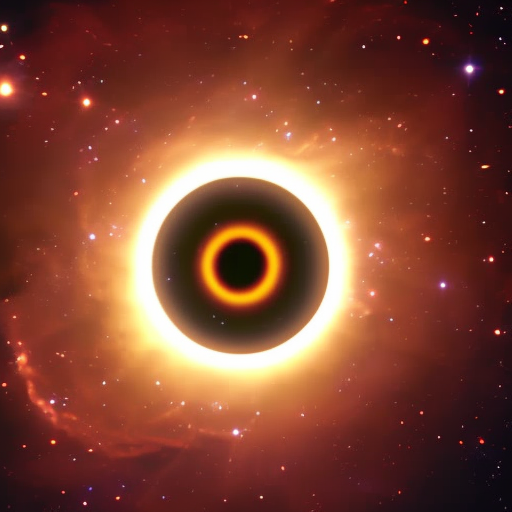Summary:
Black holes are fascinating astronomical objects that have captured the imagination of scientists and the general public alike. They are regions in space where gravity is so strong that nothing, not even light, can escape their gravitational pull. Black holes form when massive stars collapse under their own gravity, creating a singularity at their center. They have a boundary called the event horizon, beyond which nothing can escape.
Formation:
Black holes are formed through the process of stellar evolution. When a massive star exhausts its nuclear fuel, it undergoes a supernova explosion, leaving behind a dense core. If the core’s mass is above a certain threshold, it will continue to collapse under its own gravity, forming a black hole. The mass of a black hole is concentrated in a singularity, a point of infinite density.
Types of Black Holes:
There are three main types of black holes: stellar black holes, intermediate-mass black holes, and supermassive black holes. Stellar black holes have masses several times that of the Sun and are formed from the collapse of massive stars. Intermediate-mass black holes have masses ranging from hundreds to thousands of times that of the Sun and their formation is still not well understood. Supermassive black holes have masses millions or billions of times that of the Sun and are thought to exist at the centers of most galaxies, including our own Milky Way.
Event Horizon:
The event horizon is the boundary of a black hole beyond which nothing can escape, not even light. It is the point of no return. Anything that crosses the event horizon is trapped within the black hole’s gravitational pull and is destined to fall into the singularity at its center. The size of the event horizon is directly related to the mass of the black hole. The larger the mass, the larger the event horizon.
Effects of Black Holes:
Black holes have a profound effect on their surroundings. Their strong gravitational pull can distort spacetime, causing nearby objects to be pulled towards them. This gravitational distortion can create powerful tidal forces that can tear apart objects that get too close, a process known as spaghettification. Black holes also emit powerful jets of high-energy particles from their accretion disks, which are formed by the matter falling into the black hole.
Black Hole Information Paradox:
One of the mysteries surrounding black holes is the black hole information paradox. According to classical physics, information that falls into a black hole is lost forever. However, quantum mechanics suggests that information cannot be destroyed. This paradox has led to ongoing debates and research to understand the fate of information that enters a black hole.
Research and Observations:
Scientists study black holes using a variety of methods, including observations of their effects on nearby objects and the detection of their gravitational waves. The first direct observation of a black hole was made in 2019 by the Event Horizon Telescope, which captured an image of the supermassive black hole at the center of the galaxy M87. This groundbreaking observation provided visual confirmation of the existence of black holes.
Conclusion:
Black holes are intriguing and mysterious objects in the universe. They form from the collapse of massive stars and have a gravitational pull so strong that nothing can escape, including light. The event horizon marks the boundary beyond which nothing can escape. Black holes have a profound effect on their surroundings and are the subject of ongoing research and exploration. Understanding black holes is crucial for unraveling the mysteries of the universe.












